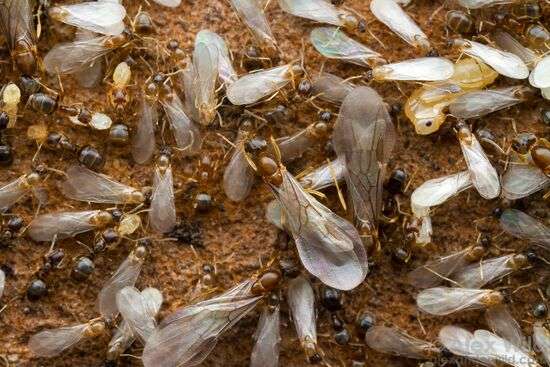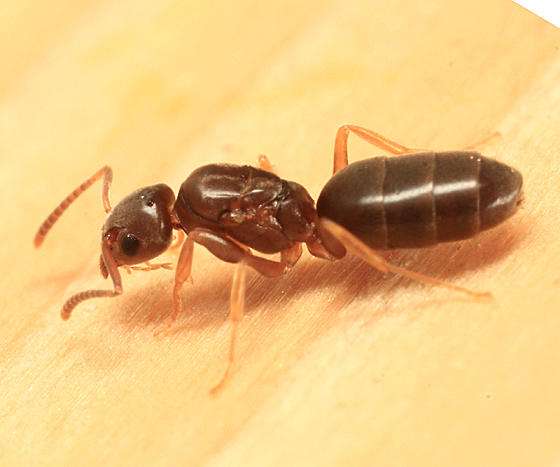
An ant species belonging to the genus Doleromyrma is called Doleromyrma darwiniana. The species, which Forel first described in 1907, is native to Australia and was brought to New Zealand. It builds its nest in the ground or beneath stones and logs. The organism has a maximum length of 2.0 to 3.0 millimeters. This ant species keeps its colonies small and “prefers protein diet.” The species is also referred to as the “brown house ant” and “Darwin’s ant” by certain authors.
Identification
The worker ants are monomorphic, not differing in size, form, or function. A worker ant is typically brown in color and is 2-3 mm in length. The body and head may be distinguished from one another because the head is dark brown and the body is lighter brown. The Darwin’s Ant shares many physical characteristics with the Argentine ant, Linepithema humile, but it can be distinguished from that species by a distinctive musty odor released when it is crushed. They have twelve-segmented antennae.
The mandibles, also known as the insect’s mouthparts, have 4-5 denticles (tooth-like projections) and 4-5 actual teeth that enable them to hold and break food. The surface of the mandible containing the teeth and the surface closest to the clypeus are at a steep angle (basal). The hairs on the clypeus, or front of the ant’s head, slope downward. The mandibles’ length is almost half as long as the size of the hairs. The propodeum, the first part of the body, is positioned lower because it is shorter than the back of the face.

Preference of Habitat
As they nest in many places, including beneath rocks, in the soil, and in rotten logs, they prefer to settle in areas of dry woodland. The dense coastal shrub is the ant’s primary habitat in the dry forest. They occasionally live in other ant species’ abandoned nests as well. Darwin’s Ant is becoming a common household pest in New Zealand due to its wide range of feeding preferences, particularly sweet foods. There have been instances where nests were discovered outside of urban residences in potted plants.
Diet and Foraging
The Darwin’s Ant can act as a predator or scavenger depending on its diet and foraging habits. They are classified as a generalist since they have been observed to devour other insects as well as scavenge food.
They are regarded as a pest because they are drawn to a variety of sweet foods, especially in homes and orchards where there is rotten fruit. In New Zealand, they have been discovered munching on sweets, jam, honey, and cakes in kitchens. In environments where there is industrial food manufacture and processing, there are worries that the ant will become a nuisance.
The Darwin’s Ant interacts with insects that secrete honeydew, especially those found on boneseed plants, and is drawn to it as a sugary food source (Chrysanthemoides monilifera). To explain, it has been discovered that the ant tends mealybugs that consume plant sap in exchange for access to the sap. They have also been observed taking care of aphids in exchange for honeydew payments.
Parasites, Illnesses, and Predators
No information is available regarding the presence of parasites or predators in Darwin’s Ant. Given that it likes to hang out near garbage dumps and tends to mealybugs and aphids that can spread disease, it may be a disease intermediate.
A survey was conducted to demonstrate its potential to supplant native New Zealand ants. The findings showed that other ants, such the typical native Southern ant (Monomorium antarcticum), were not present where Darwin’s ants were present.
Table





